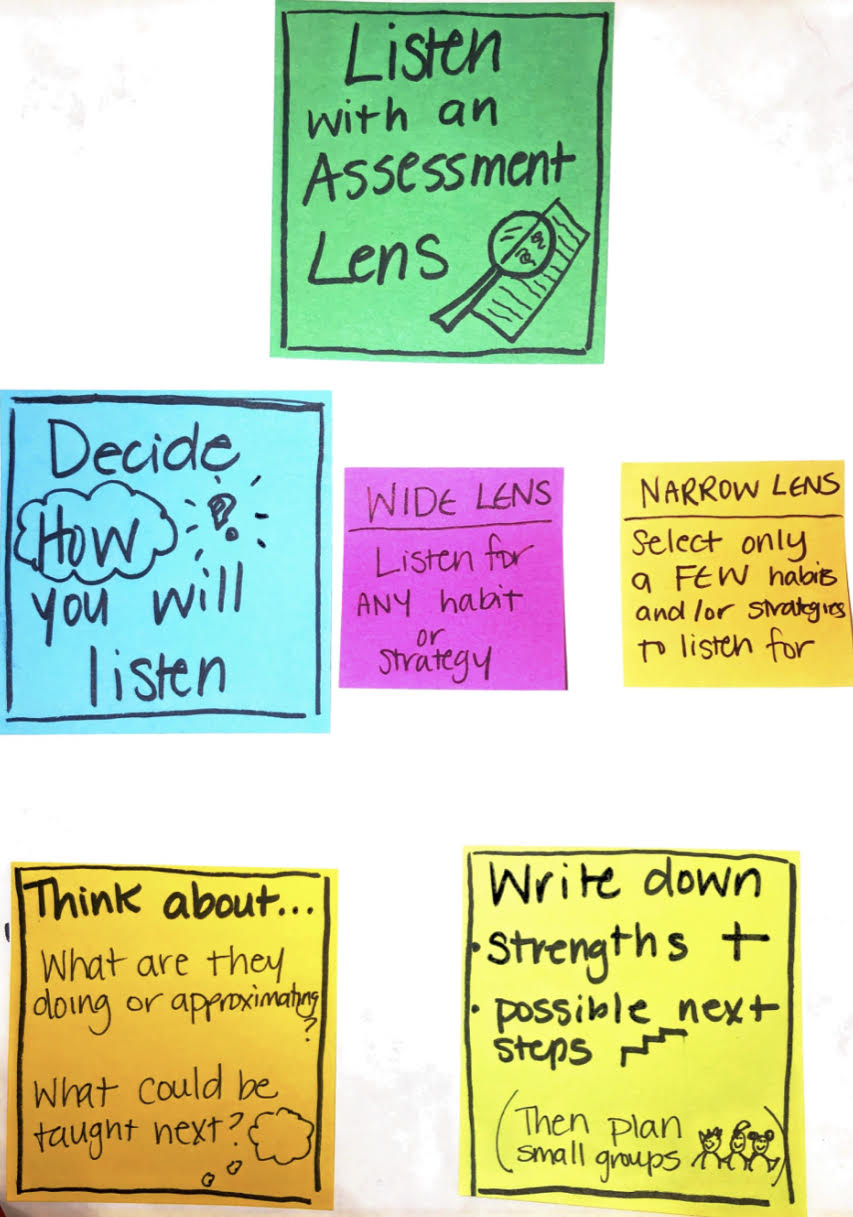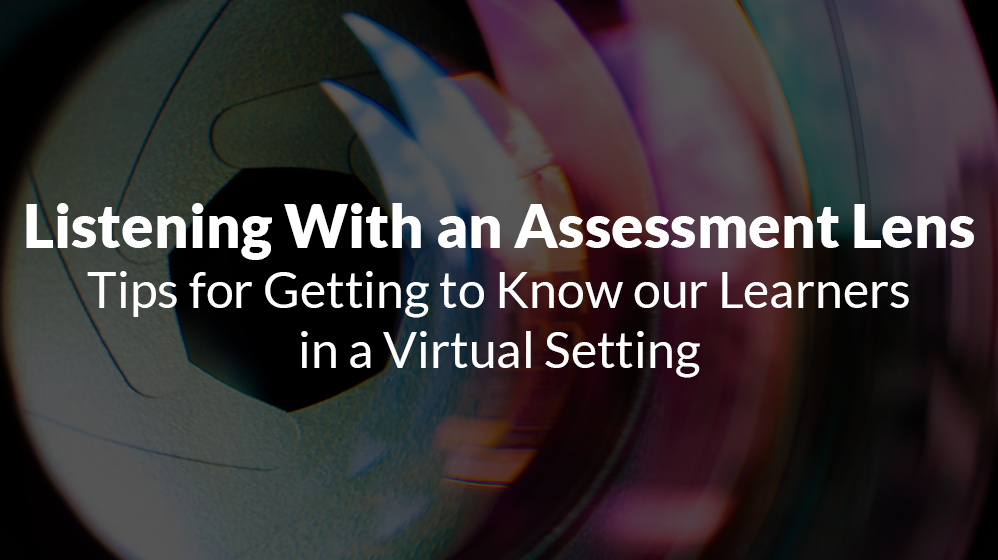Being an educator during a pandemic has created countless situations where we have been pushed to outgrow our practices and step out of our comfort zones. From teaching at a distance to trying to keep children socially distanced, we are doing it all! But as an instructional coach, one of the questions that I get the most is, “how do we get to really know our students as we sit behind a screen?”
This is quite a challenge. Unlike when we’re in the in-person classroom, we can’t peek over shoulders or sit next to our students and browse through their notebooks looking for evidence of their thinking. Instead we have to shift from using our eyes to scan over their work to using our ears to listen for areas of strength and places we could teach into next. One way that can help us be successful with this type of assessment is to identify lenses to listen through.

Listen Through A Habit Lens
When you want to find out more about how students are doing with routines, rituals, and practices that aid with independence and engagement, the habit lens is the approach you’ll want to take. Habits are the foundations of a successful classroom no matter the instructional model being used. They ensure that kids can get to work in an efficient manner and that they are successful in the learning environment.
As you use this lens, tune in to notice if students are ready with materials, to start the work after the mini lesson, to talk to a partner, or even to operate the platform you are teaching from without any troubles. If you are hearing students say things like, “I can’t find my…”, “Where do I go to…”, “How do I…”, or even silence if they’re expected to be engaging with a peer, this is feedback that they need more support with their habits.
You will also want to listen for the kids that are successful in this area. These kids are the ones that might be ready for the next step or ready to lead a small group seminar, teaching their peers about a certain classroom routine or procedure.

Listen Through a Skill Lens
When using this lens, the focus is on how well students transfer strategies they have been previously taught as well as what they are currently learning. Listen for evidence of the use of these strategies during whole class, small group, or one on one time.
As you use this lens, think about what might be said to show evidence of understanding. Review the big ideas of the mini lessons and strategies taught in the past and in the current moment. Ask, what do I see students attempting, having mastery of, or not doing yet? Use that information to guide your anecdotal note taking and to make a plan for how you will lead a conference or small group.
If you feel like kids are not being vocal enough about the strategies they are trying, prompt with questions like, “What are you working on as a (reader, writer, mathematician…)?”, “Are there any parts that feel tricky as you (write, read, solve this problem…)?” This will help to elicit the type of thinking you want to hear.
Listen Through An Identity Lens
Finally, and most importantly, if you want to get a sense of how much ownership your students have over their learning, and their beliefs about who they are and how they fit in your learning community, listen through an identity lens.
Use this lens to check for how students see themselves as learners. Tune in to how they communicate work plans for the day, articulate goals or next steps, and how they advocate for themselves when they feel stuck. When students see themselves as readers, scientists, writers, and beyond, you will see and hear that agency in their day-to-day lives within your classroom community.
For knowing how kids perceive themselves as individuals and as a part of your classroom community, listen as students share elements of their lives beyond school and how that plays a role within the classroom setting. Do they have a sense of belonging? Do they share about who they are? Do they embrace their uniqueness? Listening to students’ perceptions of who they are and their role within your community is crucial information to know.
The Bottom Line: Listening Is A Powerful Tool for Assessment
The information that can be discovered through fine tuning how we listen to our kids is invaluable. It can make the difference between tailoring our teaching to our kids and just teaching a class. Be sure to leave lots of space for student talk in your day, listen in for strengths and next steps, and use that information to leverage your teaching.
Learn how educators are regularly receiving effective instructional feedback by clicking here.







